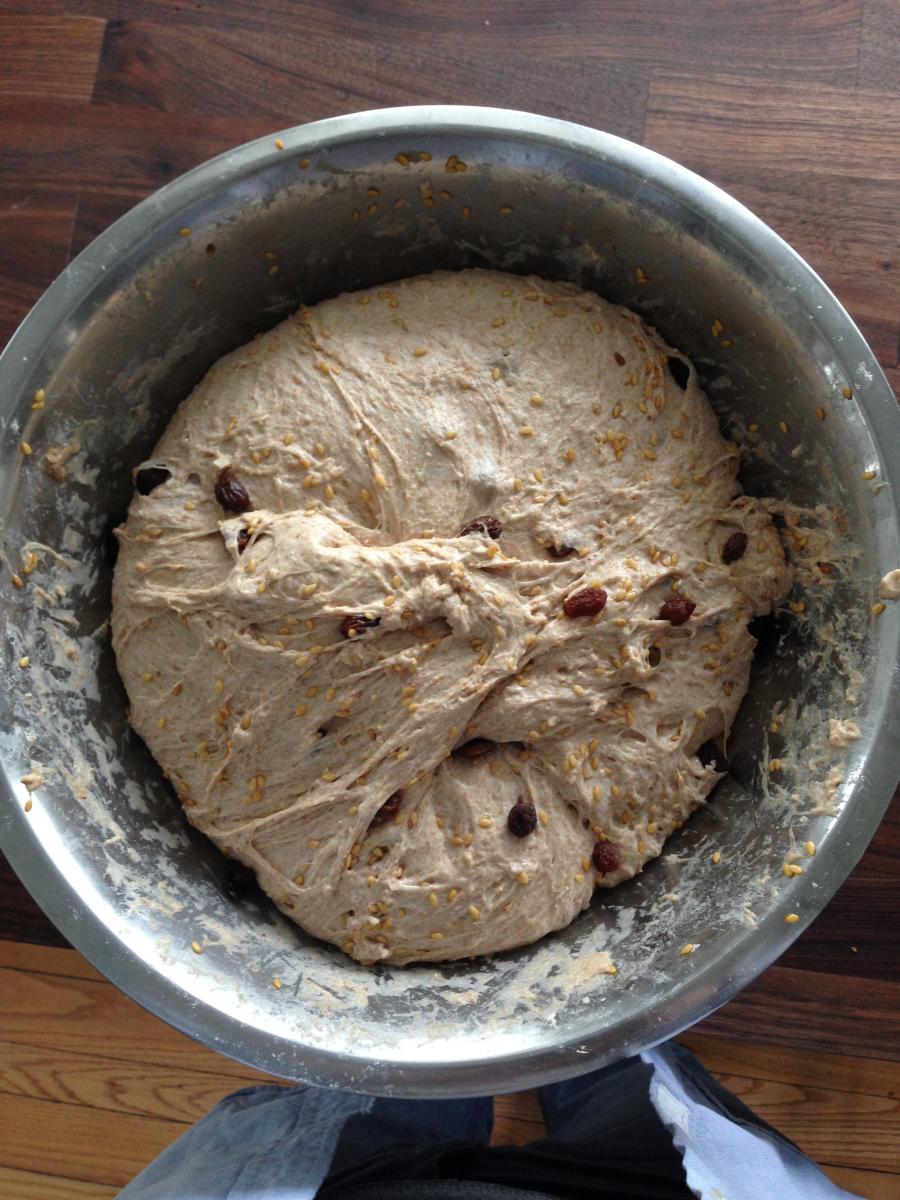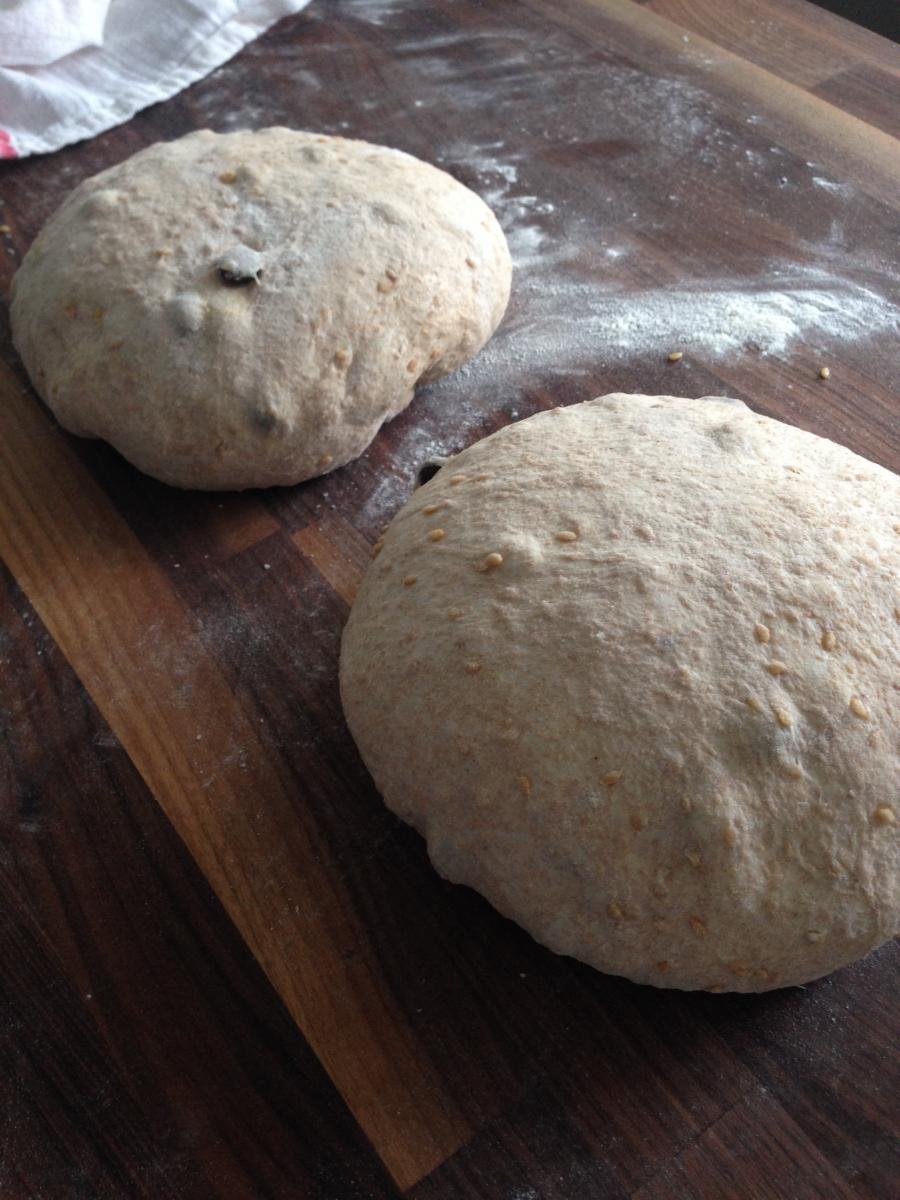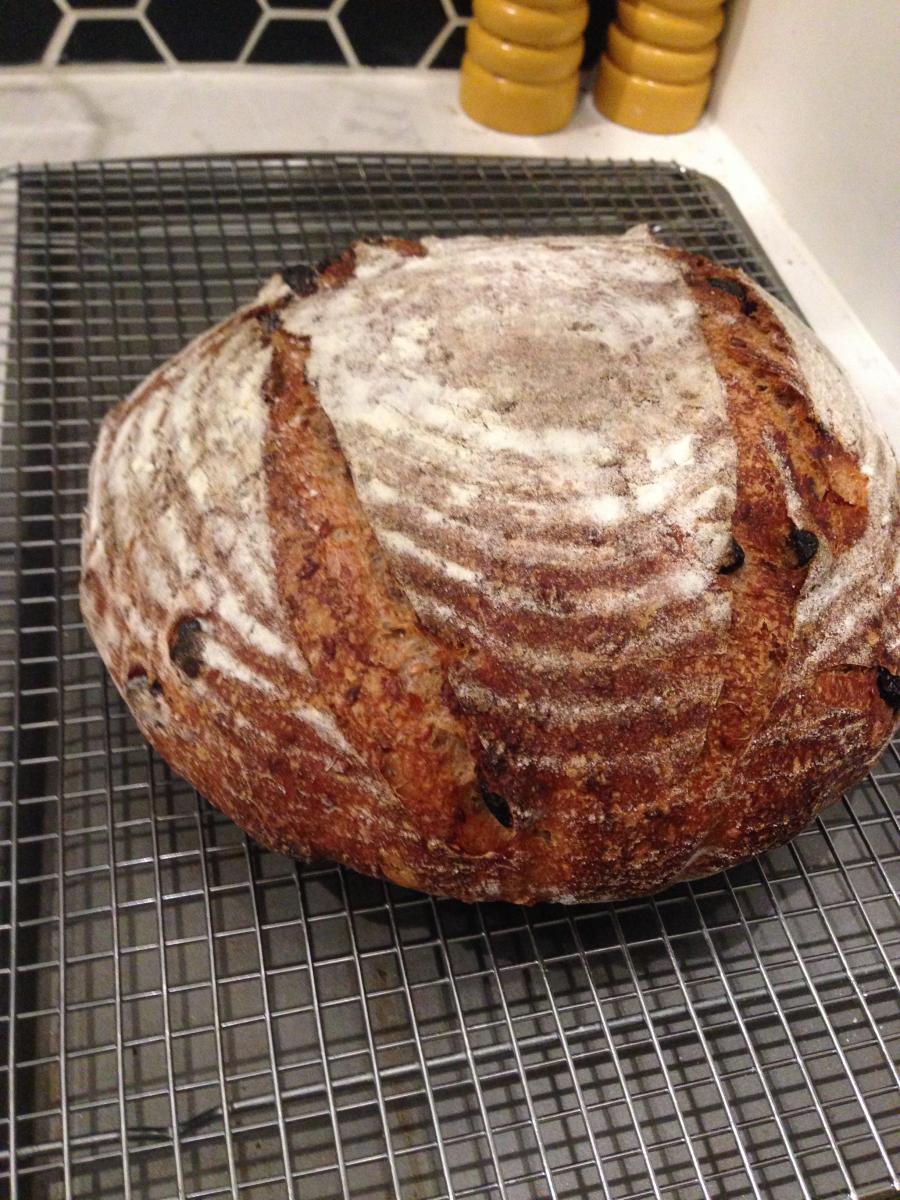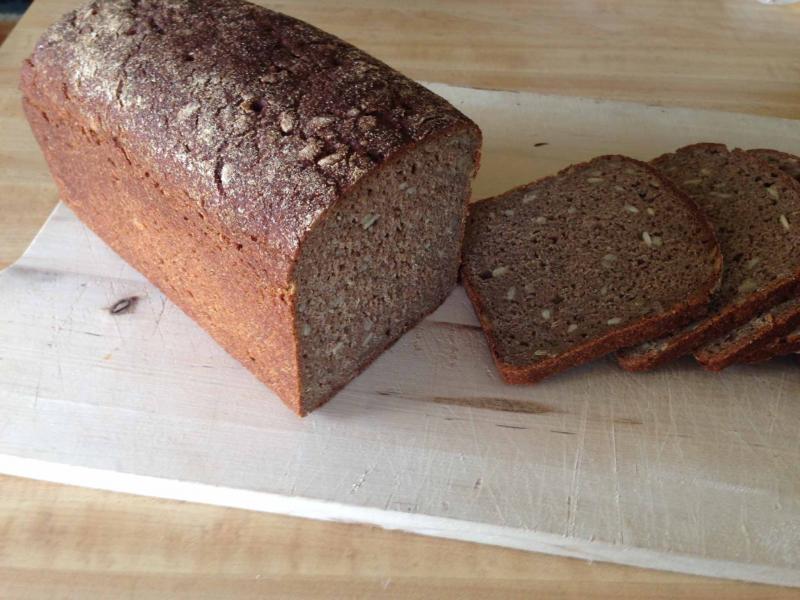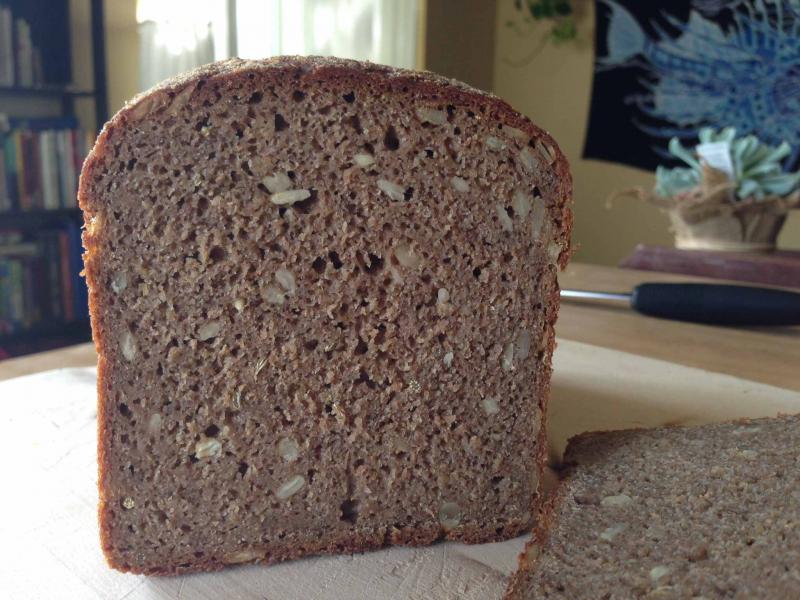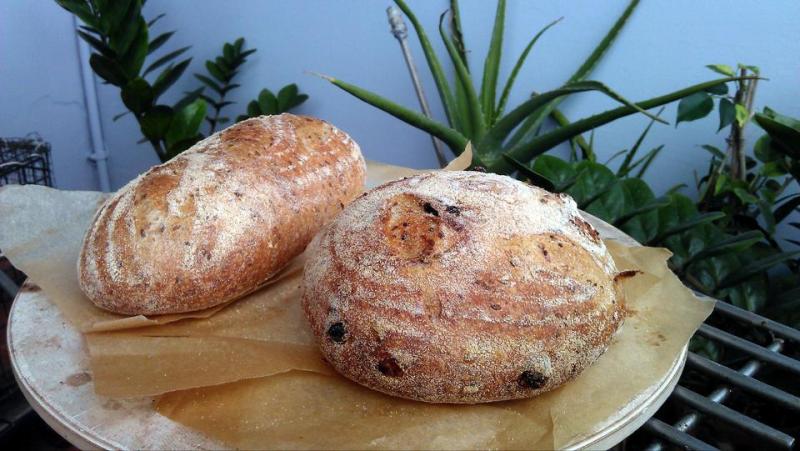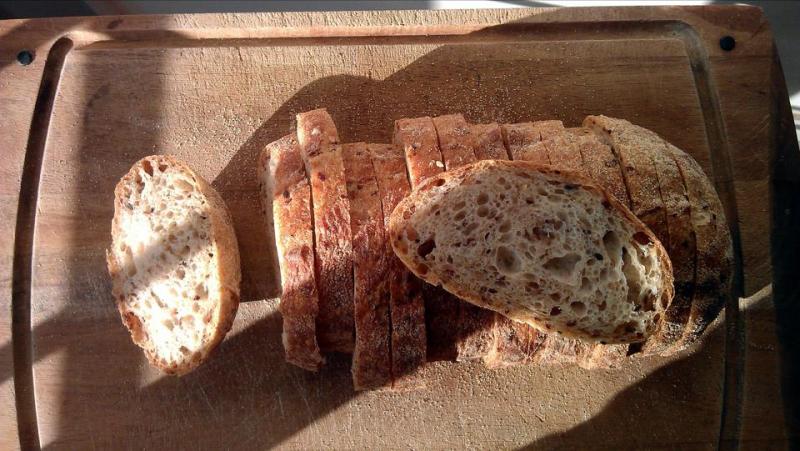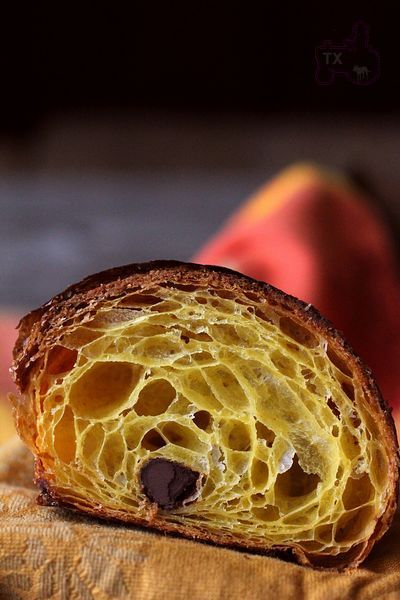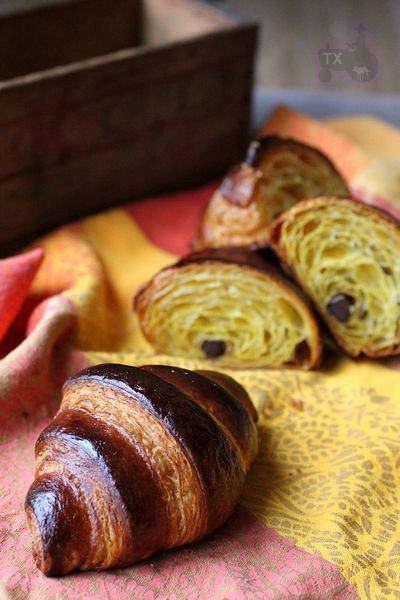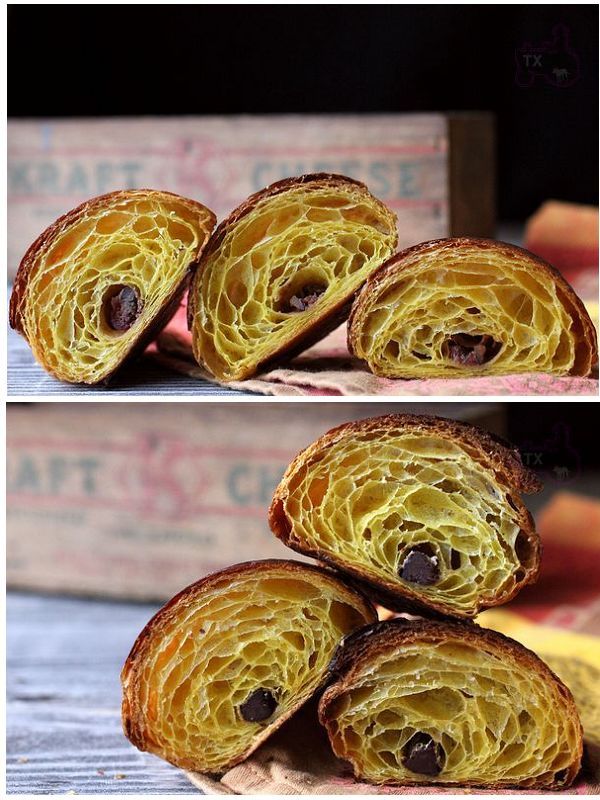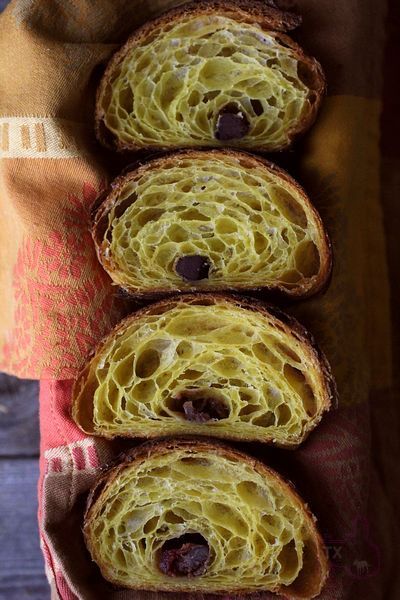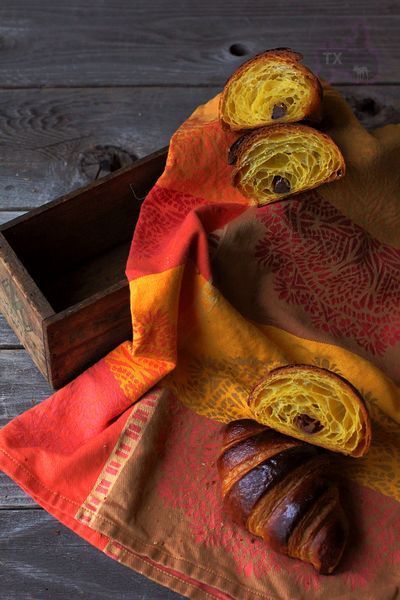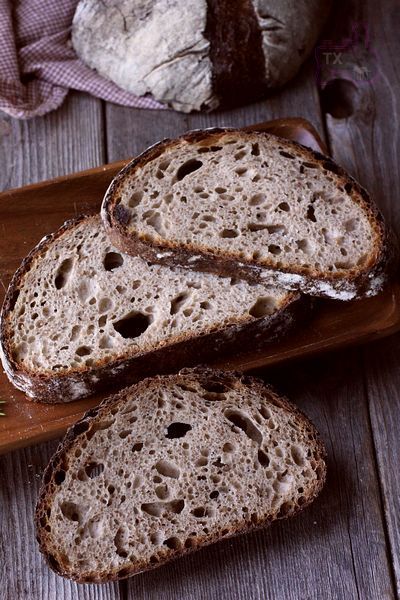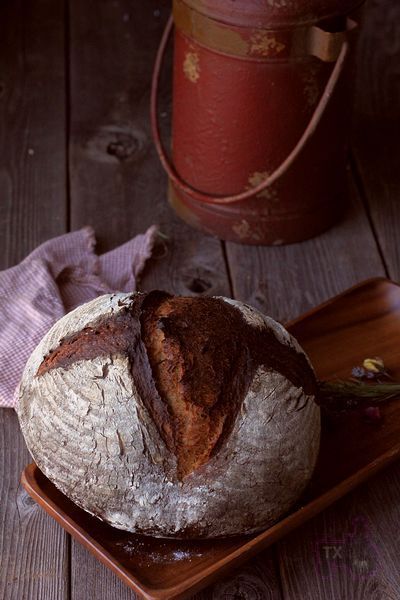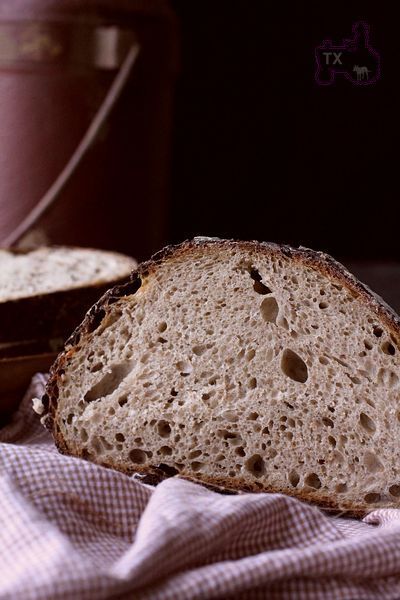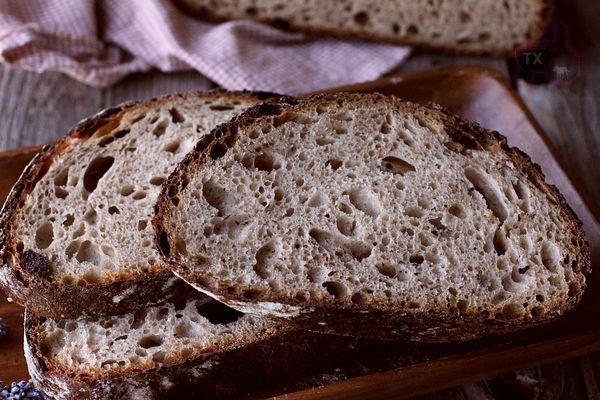
Sourdough Italian Rolls

Sourdough Italian Rolls
April 18, 2015
Those familiar with my San Joaquin Sourdough will recognize the rolls I baked today as its Italian cousin. Besides the obvious difference that these are rolls rather than bâtards, they also have around 20% Durum flour, some sugar and olive oil, and they have a sesame seed coating.
I developed this formula in 2011. Originally, it had both diastatic malt and suger. It was pointed out to me that the AP flour is already malted, and, as a sweetener, the malt is redundant. I really didn't need both malt and sugar. So, today's version omits the malt.
Total Dough |
|
|
Ingredient | Amount (gms) | Bakers' % |
AP flour | 434 | 79 |
Fine Durum flour | 100 | 18 |
WW flour | 11 | 2 |
Whole Rye flour | 5 | 1 |
Water | 400 | 73 |
Salt | 10 | 1.8 |
Sugar | 14 | 2.5 |
EVOO | 14 | 2.5 |
Total | 988 | 179.8 |
Liquid Levain |
|
|
Ingredient | Amount (gms) | Bakers' % |
Liquid starter | 40 | 40 |
Water | 100 | 100 |
AP flour | 70 | 70 |
WW flour | 20 | 20 |
Whole Rye flour | 10 | 10 |
Total | 240 | 240 |
Disperse the liquid starter in the water.
Add the flours and mix thoroughly.
Ferment at room temperature until expanded and bubbly (8-12 hours). If necessary, refrigerate overnight and let warm up for an hour before using.
Final Dough |
|
Ingredient | Amount (gms) |
AP flour | 400 |
Fine Durum flour | 100 |
Water | 350 |
Salt | 10 |
Sugar | 14 |
Active liquid levain | 100 |
EVOO | 14 |
Total | 988 |
Procedures
In a large bowl, disperse the levain in the water.
Add the flours and sugar to the liquid and mix to a shaggy mass.
Cover the bowl and let it rest for 20-60 minutes.
Add the salt and olive oil and mix thoroughly. (Note: I squish the dough with my hands until it comes back together, then do stretch and folds in the bowl until it forms a smooth ball and the oil appears completely incorporated.)
Transfer the dough to a 2 quart lightly oiled bowl, and cover the bowl tightly.
After 30 minutes, do stretch and folds in the bowl. Repeat 3 more times at 30 minute intervals.
Refrigerate for 12-36 hours. (Today, I retarded for 23 hrs.)
Divide the dough into 8 or 9 equal pieces and pre-shape as rounds or logs. Cover with a clean towel, baker's linen or plasti-crap and let rest for one hour. (Today, I scaled 6 rolls at 4 oz and 3 rolls to 3.65 oz.)
Shape as long rolls and proof en couche or on a baking sheet for about 45 minutes. (Note: Optionally, roll the rolls on damp paper towels, then in a tray of sesame seeds. Alternatively, you can brush the loaves with water and sprinkle with sesame seeds.)
One hour before baking, pre-heat the oven to 480ºF with a baking stone and steaming apparatus in place.
Transfer the rolls to a peel. Score them, if desired. Transfer the rolls to the baking stone. Or, if the rolls were proofed on a baking sheet, score the rolls and place the sheet in the oven.
Steam the oven, and turn the temperature down to 460ºF.
After 10 minutes, remove the steaming apparatus. (Note: If you have a convection oven, switch to convection bake and turn the oven down to 435ºF for the remainder of the bake.) Continue baking for another 6-8 minutes or until the rolls are nicely browned and the internal temperature is at least 205ºF.
Transfer the rolls to a cooling rack. Cool completely before eating.
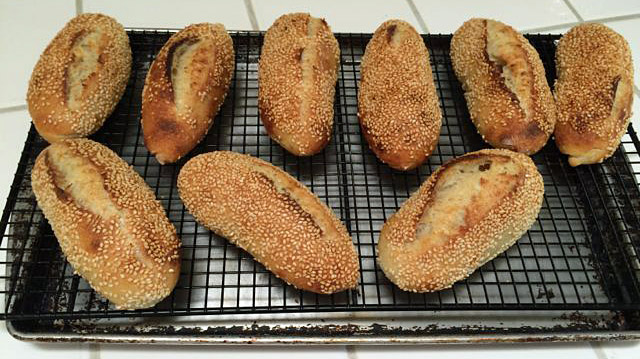
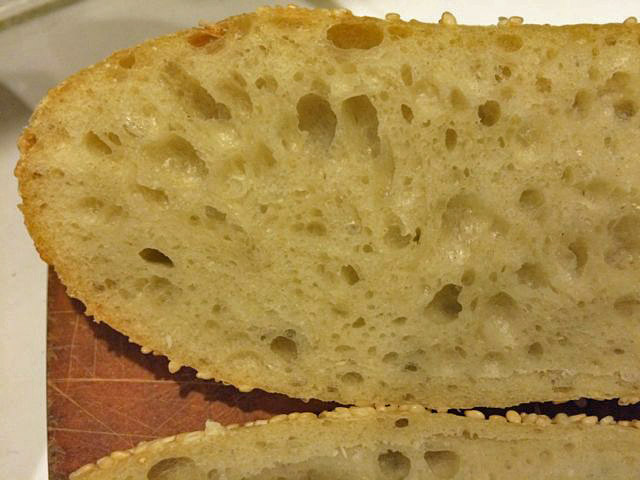
Sourdough Italian Roll crumb
My wife frequently asks me to make “soft” rolls to use for her sandwiches, but I seldom do so for some reason. I baked these while she was out. When she got home and saw them, she asked if she could use them to make sandwiches for the bridge group she is hosting next week. I know I can make more, so I just asked to save one for us to share with dinner. Well, after tasting the dinner roll, she started talking about getting rolls from the bakery for her bridge group and reserving the sourdough Italian rolls for us. I thought they were pretty good too. In fact, the flavor was so good I would hesitate to cover it with sandwich fillings.
I also made some blueberry muffins. The recipe is from The Best Recipe, by the America's Test Kitchen folks.
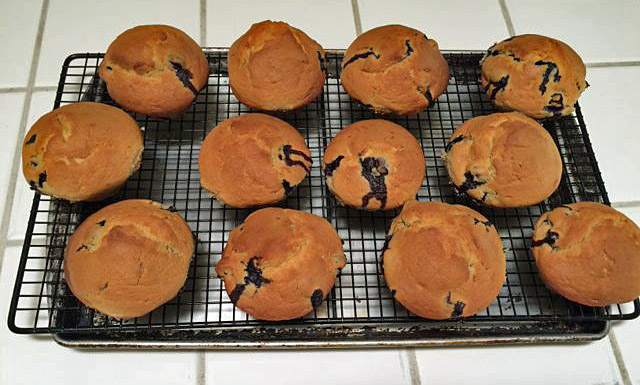
They were delicious as well.
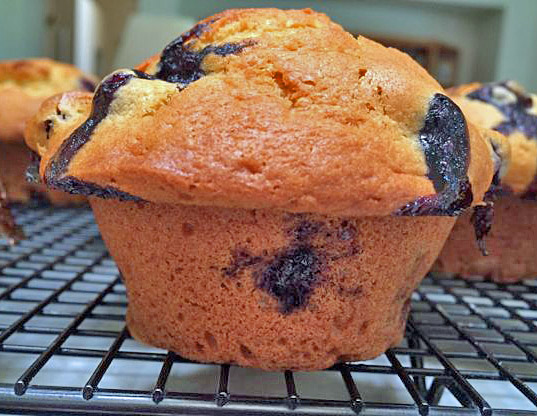
Happy baking!
David
Submitted to yeastspotting




